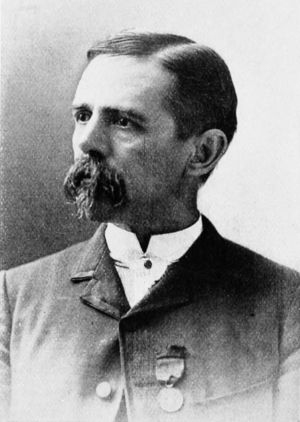Alabama Museum of Natural History facts for kids

View of the Grand Gallery of Smith Hall looking North.
|
|
| Established | 1831 |
|---|---|
| Location | Tuscaloosa, Alabama United States |
The Alabama Museum of Natural History is a cool place to learn about nature and history in Alabama. It's located in a building called Smith Hall on the University of Alabama campus in Tuscaloosa. This museum is the oldest one in Alabama, first opening its doors way back in 1831.
Inside the museum, you can explore Alabama's natural world from different time periods. Imagine seeing things from the Age of Dinosaurs, the Coal Age, and even the Ice Age! The museum has collections of rocks, animals, minerals, ancient fossils, and items about different cultures and history.
One of the most exciting things to see is a huge copy of a Basilosaurus cetoides. This was an ancient whale that lived a very long time ago. It's so important that it's been named Alabama's official State Fossil! You can also see the skull of an American mastodon, which is like an ancient elephant. This skull was found in the Tombigbee River. Another amazing item is the Hodges meteorite. This space rock actually hit a woman when it fell to Earth near Sylacauga on November 30, 1954! The museum also organizes fun trips and explorations throughout the year, a tradition they started in 1979.
History of the Museum

The building where the Alabama Museum of Natural History is located is called Smith Hall. It's named after a very important person, Eugene Allen Smith. He became the state geologist in 1873. For almost 40 years, he explored Alabama, making maps and collecting scientific items.
The first stone for Smith Hall was placed on May 28, 1907. The building was finished in the fall of 1909 and officially opened on May 5, 1910.
Eugene Smith asked Herbert Huntington Smith to be the museum's curator. A curator is someone who takes care of the museum's collections. Herbert H. Smith led the museum from 1910 until he passed away in 1919. Herbert's wife, Amelia Woolworth Smith, was also a collector and worked for the museum. After her husband died, she became the acting curator.
Building's Design
Smith Hall has a main part with three stories. This central part was built specifically for the Alabama Museum of Natural History. On each side, there are two-story wings. The north wing used to be for the Biology Department, and the south wing was for the Geology Department. Today, the Geology Department uses both wings.
The way Smith Hall is designed is similar to other big natural history museums. Many of these were built in the early 1900s in cities like Chicago, New York City, and Washington, D.C.
The building's style is called Classical Revival, which is also known as Beaux-Arts. Outside, you'll see a row of eight tall Ionic columns. These columns stand on a raised ground floor, almost like a platform. The main door is on the ground level and has a fancy stone frame.
When you step inside, you'll find a large central hall. The most striking feature is a grand staircase made of beautiful Alabama marble. It's supported by iron made right there in Alabama! This staircase leads you up to the Grand Gallery Exhibition Hall on the second floor. The Grand Gallery has a circle of huge Corinthian columns. Above these columns, the ceiling is curved like a barrel. It has skylights that let in lots of natural light, making the space bright and welcoming.
See also
 In Spanish: Museo de Historia Natural de Alabama para niños
In Spanish: Museo de Historia Natural de Alabama para niños


